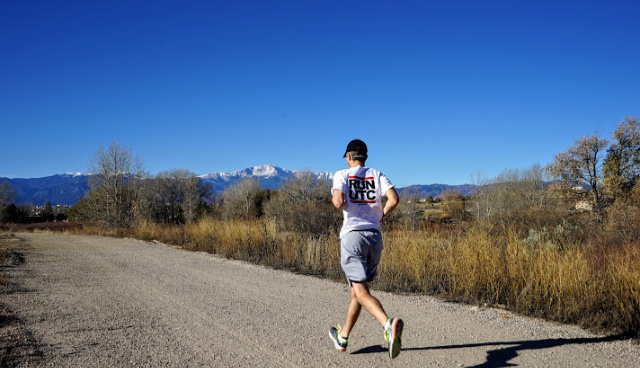Injuries are like a central governor to your training: they hold you back, limit your potential, and drag down your performances. How can you escape that injury cycle so you can accomplish more of your goals?

A long time ago, I used to get injured all the time.
In college, I had a variety of repetitive stress injuries that prevented me from running like I wanted:
- Multiple arch strains
- Plantar fasciitis
- Achilles tendinopathy
- IT band syndrome
- SI joint disfunction
In hindsight, if I were able to escape that destructive cycle I would have been able to run higher mileage, complete more workouts, miss fewer races, increase my confidence, and train more consistently overall.
That means I could have been a lot better.
One of my goals with Strength Running is to prevent you from making the same mistakes that I’ve made in my own running career. Because I’ve made almost all of them!
Some of my “favorite” mistakes have been:
- Running my easy days too hard
- Not doing any dynamic warm up exercises before each run
- Inconsistently completing my strength exercises
- Relying too much on intensity and brutal workouts to “prove” my fitness
Now, my coaching philosophy is more balanced. There’s less pressure on any one individual workout and more on the total body of work completed during a training cycle.
And today on the podcast, I want to show you what that looks like in practice.
How to Get Healthy & Keep Improving

Brian putting in the miles training for his next marathon
Recently I asked the Strength Running community if anybody was interested in coming on the podcast to discuss their running.
And Brian stepped up!
Brian is in his mid-40’s and started running about five years ago. He’s run a variety of races but only one marathon. A big reason why is that he’s had a lot of injuries from knee pain, glute problems, and IT Band Syndrome.
And his only marathon wasn’t hugely successful. While he made it to the finish line, he did so with pain and didn’t run as well as he was hoping.
In this episode of the podcast, our goal is to keep Brian healthy and make his second marathon a cause for celebration.
We’re discussing:
- How Brian typically prepares for the marathon
- His background in other sports
- The steps he can take to prioritize healthy, pain-free running
- Marathon training fundamentals
Be sure to listen to our other coaching call episodes about running a faster marathon, breaking 3 in the marathon as a woman, and training as a Master’s runner.
Subscribe to the podcast in iTunes, Spotify, Stitcher, iHeartRadio, or Google Play.
Show Links & Resources:
- Injury prevention for runners ecourse
- Elite runners on recovery and staying healthy
- Sub 3 hour marathon training
- How to run your fastest marathon
Thanks Brian for sharing your running life with us!
Thanks PATH Projects
PATH Projects made this episode of the podcast possible. They’re an online-only retailer of high-quality running gear and apparel that I’m falling in love with (and they’re giving away three $75 gift cards!).
Currently, I’m wearing the Sykes 5″ Shorts (see them in action in this video), the Pyrinees hooded sweatshirt, and the Torch base liner. Their gear is unique, stylish, and a premium quality that feels great to wear. And because there’s no retail markup, PATH is quite affordable.
They’re using new technical fabrics and innovations to create award-winning apparel for endurance athletes. In fact, their Brim shorts and Tahoe base liner won Runner’s World’s 2018 Gear of the Year award. And the Pyrinees hoodie was named one of the best six sweatshirts for running in the cold by Gear Patrol.
Check out their full lineup of shorts, tops, hats, and base liners on their site – and don’t forget to enter to win one of three $75 gift cards at PathProjects.com.